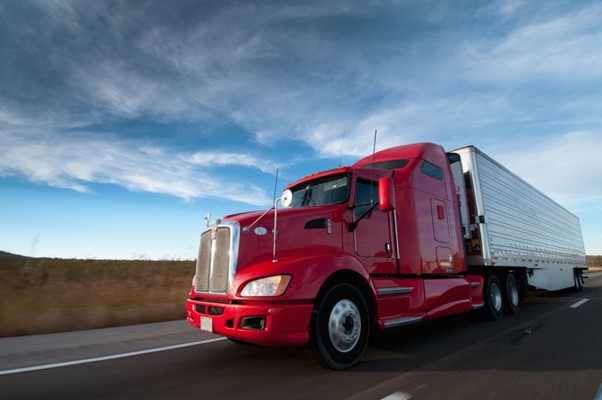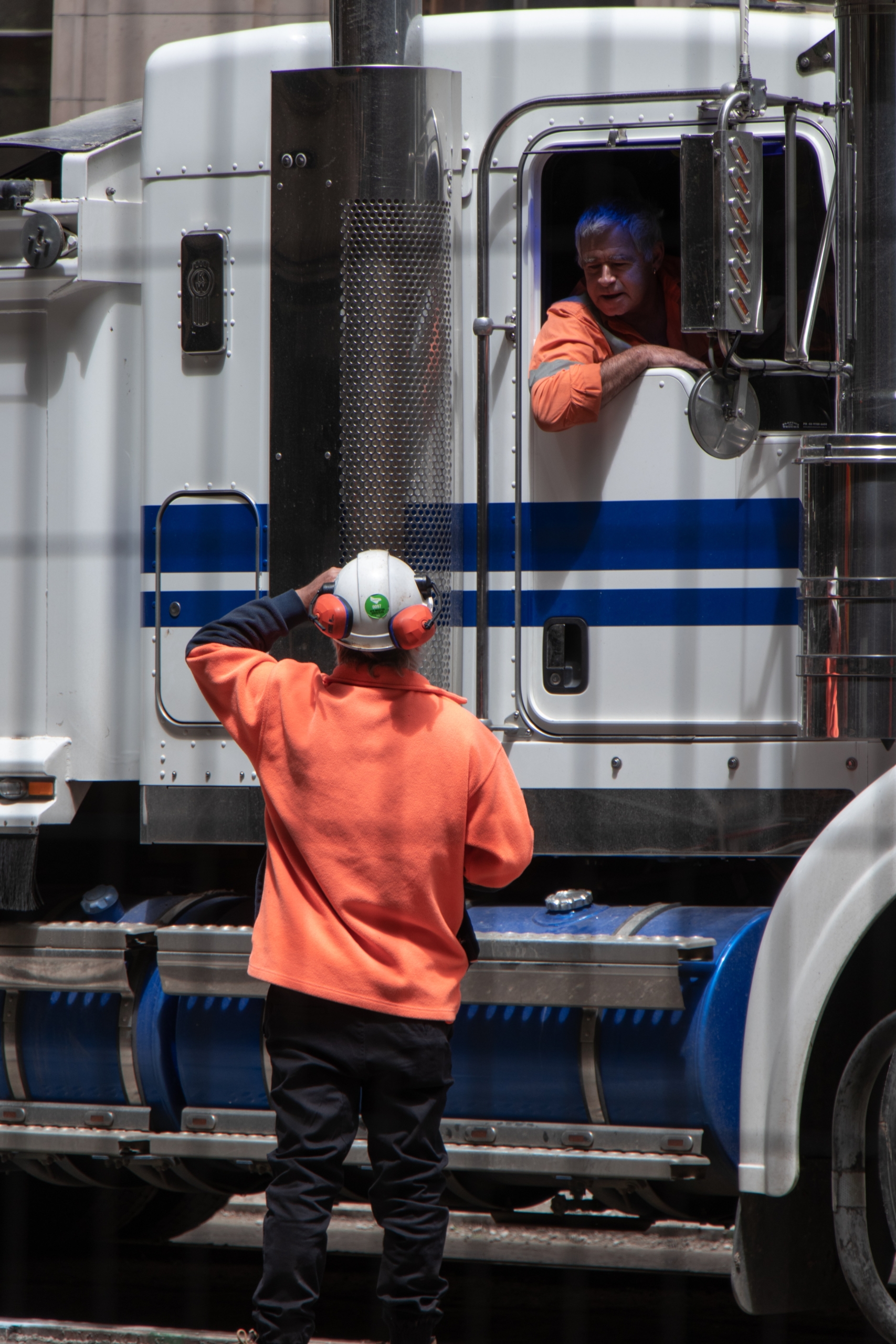Managing your Chain of Responsibility obligations
The Chain of Responsibility (CoR) law ensures everyone who works with heavy vehicles – from the business that employs the driver to the place where goods are delivered – is accountable for safety.

What is the Chain of Responsibility Law?
The National Heavy Vehicle Regulator (NHVR) is Australia’s regulator for heavy vehicles over 4.5 tonnes gross vehicle mass. The NHVR administers the Heavy Vehicle National Law (HVNL) which is enforceable in the ACT, NSW, QLD, SA, TAS and VIC. Although the HVNL has not commenced in WA or NT, the HNVL apples to vehicles from those jurisdictions when they cross into one of the states or territories where the HVNL applies.
Who can be prosecuted under the CoR law?
Under Chain of Responsibility (CoR) law, everyone across the supply chain shares an equal responsibility to comply with the HVNL, even if they are not the actual driver of the heavy vehicle.
An individual is considered part of the road transport supply chain if they have any control or responsibility over any heavy transport task, such as consigning, packing, loading or receiving goods as part of their business. This supply chain also extends to corporate entities, directors, partners and managers, who are all accountable for the actions of the people under their control.

Managers and corporate entities share an equal responsibility with drivers under the CoR law, even if they do not operate the heavy vehicle
The CoR law was amended in 2018. Previously, an incident, accident or road offence had to occur before company executives could be held liable. After the 2018 amendment, company executives and parties in the chain can be charged with a breach of duty simply for not having systems in place to manage safety, even if no incident has actually occurred1. This means that businesses can be held accountable on the potential risks of an incident occurring as a result of breach of duty.

A business involved in the Chain of Responsibility can be prosecuted even if no incident has actually occurred
Am I a party in the CoR?
You are a party in the CoR when you perform any of the following 10 functions:
- employ a heavy vehicle driver (employer)
- engage someone to drive a heavy vehicle under a contract for services (prime contractor)
- direct the control and use of a heavy vehicle (operator)
- schedule the transport of goods and passengers in a heavy vehicle, or schedule a driver’s work and rest hours (scheduler)
- consign goods for transport by a heavy vehicle (consignor)
- receive goods delivered by a heavy vehicle (consignee)
- pack or assemble goods for transport in a heavy vehicle (packer)
- manage premises where five or more heavy vehicles are loaded or unloaded each day (loading manager)
- load a heavy vehicle (loader)
- unload a heavy vehicle (unloader)
You are a CoR party because of a function you perform, not because of a title or job description, or the words of a contract. If you engage in any of the above activities, you or your business are accountable for heavy vehicle safety according to your primary duty.

A packer who packs or assembles goods for transport in a heavy vehicle is included in the Chain of Responsibility
How to carry out your primary duty under the CoR law
Although there are 10 different CoR functions, the duty is the same for all of them: eliminate or minimise risks from heavy vehicle transport activities under your control or influence, so far as is reasonably practicable.

Your duties are qualified by the term ‘reasonably practicable’. There are two elements to what is ‘reasonably practicable’. A duty-holder must first consider what can be done – that is, what is possible in the circumstances for ensuring health and safety. They must then consider whether it is reasonable, in the circumstances, to do all that is possible. This means that what can be done should be done unless it is reasonable in the circumstances for the duty-holder to do something less.
Obligations of heavy vehicle drivers under the Chain of Responsibility

The driver of a heavy vehicle driver does not have to comply with the CoR law, but the company that employs them does. The safety training and procedures that the driver has to follow are part of the employer’s CoR obligations, which includes:
- Having a vehicle that is roadworthy and well maintained
- Having procedures in place to ensure the vehicle is loaded safely, within the recommended mass and dimension limits
- Training drivers and support workers on how to securely restrain loads
- Prohibiting drivers from driving when fatigued or exceeding speed limits
- Recording work and rest hours
- When driving a vehicle that exceeds general mass and dimension limits, knowing what conditions the vehicle has to comply with and how to work out which routes are permitted.

Work, Health and Safety Management Systems
Having an effective Work, Health and Safety (WHS) Management Systems is one of the best ways of ensuring that your business is complying with its duties under the HVNL. Adopting and actively using a WHSMS has proven to help reduce safety-related incidents in heavy transport industries such as maritime, rail and aviation2.
In order to be effective, your WHS Management System should become an integral part of how your business functions daily. It should reflect how work is done and influence every business decision taken.
A good WHS Management System should consist of:
- WHS Manual – the overarching framework for the system describing the processes by which each safety issue will be managed
- Induction – A document to allow employees, contractors and visitors to learn relevant health and safety information as well as hazards and risks specific to your workplace
- Policies – High level guiding commitments and principles that your organisation operates by
- Procedures or Safe Work Instructions – Specific instructions relating to particular tasks, equipment or substances
- Registers – Such as training registers to monitor and ensure all workers have been inducted and appropriately trained
- Forms – Such as workplace inspection forms and hazard identification checklist
- Consultation and meetings module – To record and capture all consultation about health and safety matters
- Incident recording and investigations – Including guidelines and planning for incident response, ensuring incidents (including near misses) are captured, as well as procedures to ensure incidents are fully investigated and corrective actions taken as required.

Your employees should be using your WHS Management System regularly as part of their work task
At its heart, the WHS Management System should be used to conduct risk management activities to help eliminate or minimise your safety hazards and risks, and should include:
- Identifying and reporting safety hazards and incidents
- Assessing what harm or risks could arise from each hazard
- Identifying current controls
- Putting in place any additional controls to eliminate or minimise the level of risks
- Monitoring or reviewing the effectiveness of your risk controls.
Complying with your duties and CoR obligations
Due to the heavy loads involved, incidents involving heavy vehicles may result in severe and serious outcomes. Under the current NHVL, your business can be held in breach of your primary duty if you do not have measures in place to manage safety. Therefore it is crucial that your business has the right WHS Management System in place to ensure your obligations are met systematically. Everyone in the chain must work together to ensure the health and safety of themselves and others in the workplace.

The choices your business make in terms of safety can have serious consequences for other people.
Citations
- National Heavy Vehicle Regulator, 2023, ‘Safety, Accreditation & Compliance’, https://www.nhvr.gov.au/safety-accreditation-compliance/chain-of-responsibility/faqs, accessed on 7th May 2023.
- National Heavy Vehicle Regulator, 2021, ‘Safety Management Systems Factsheet’, https://www.nhvr.gov.au/files/201805-0797-sms-fact-sheet.pdf, accessed on 7th May 2023.










